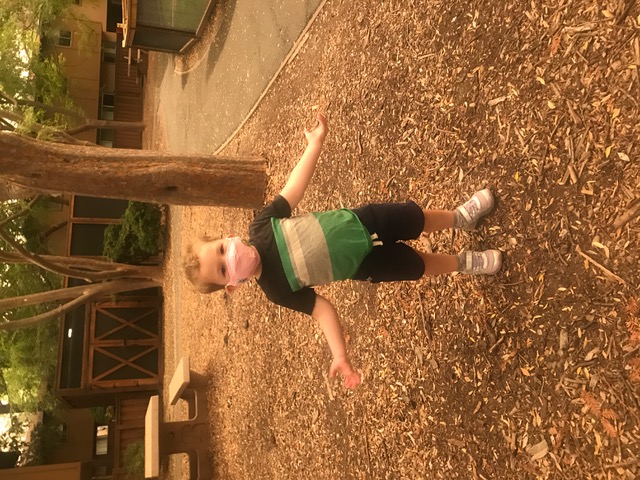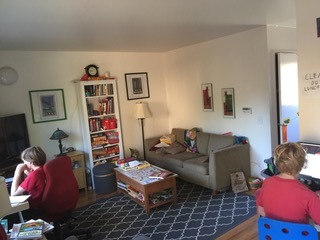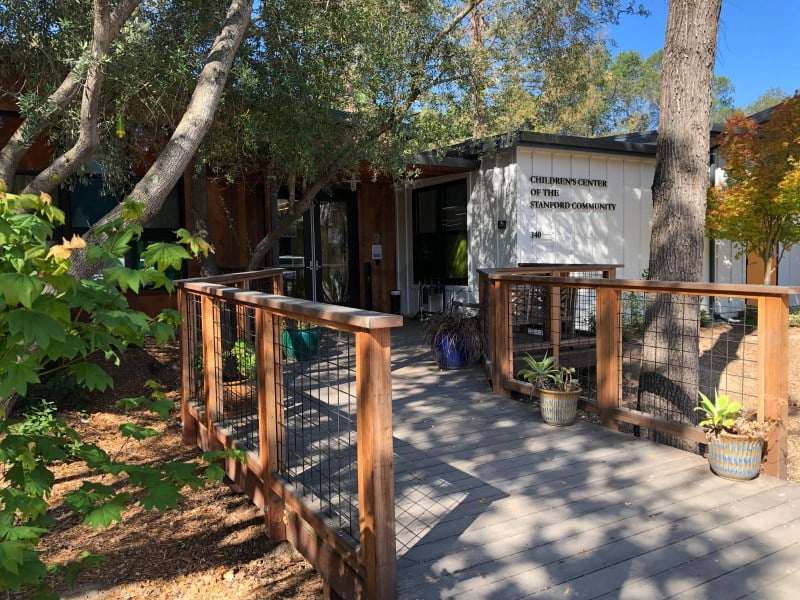Graduate students are working hard to balance their degree responsibilities with new childcare limitations and pandemic stressors. When COVID-19 hit in March, schools and daycares closed. Even as they begin to reopen, the challenges continue.
These issues arise during an existing affordability crisis for graduate students at Stanford, and childcare is one of the largest expenses families face. According to the Economic Policy Institute, the average yearly cost for infant childcare in California is $16,945, which is more than the cost of yearly in-state tuition for a public four-year college.
Fourth-year education Ph.D. student Carrie Flores is pursuing her degree with two children in tow, a three-year-old and a five-year-old. Flores said that graduate students like herself have been juggling family commitments, working from home and the stress of the current pandemic as they work to stay on track for their degree progression. She added that she wishes Stanford had been more flexible with graduate students, given the circumstances.
“I wish that they had just given us more room to breathe,” Flores said.
Similarly, sixth-year sociology Ph.D. student Christianne Corbett is working towards her degree while caring for a 10-year-old and a 12-year-old. She is worried about the security of University housing if the pandemic situation sets her back in her degree schedule.
“What I am worried about is that we’re going to be kicked out of this house before I finish,” Corbett said.
Doctoral students lose their housing priority after their sixth year. If they have a delay in their course of study, they cannot renew their housing contract for a seventh year and would have to hope for winning University housing in a lottery system, with no guarantees.
Stanford is currently evaluating the impact of the pandemic on graduate students and their degree progress and considering intervention strategies, according to a statement from University spokesperson E.J. Miranda.
“Students are encouraged to discuss their individual concerns with their faculty advisor, faculty Director of Graduate Studies or student services staff,” wrote Miranda.

Graduate students, like Flores and Corbett, wish they had seen better communication from the University.
“There just wasn’t a lot of outreach that really felt very genuine of like, ‘Hey we understand that people are really dealing with all these situations,’” Flores said.
Space has also been an issue for some graduate students working from home with children. Flores lives in University housing with her family: “We’re all in touch with each other’s business all the time,” she said.
The University is aware of space concerns, according to Miranda, who acknowledges that graduate students — especially couples living in studio apartments — can find it difficult to study and work in the same space. According to Miranda, the University has worked to address space issues by converting common areas into “respite spaces.”
But for many, the bigger threat is time, not space. Fourth-year electrical engineering Ph.D. student Pietro Caragiulo lives with a baby and a kindergartner. Originally, Caragiulo and his wife had planned on sending their baby to childcare, but due to the pandemic, they take shifts for their child in order to provide near-constant care while also balancing work schedules.
“For the little one, that is where you really need to be with him every hour of the day,” Caragiulo said.
Even older children need frequent attention when at home. Corbett said that while her children do not need constant supervision, she worries for them, especially since they are not spending as much time as usual with other children.
“I’m always feeling like, ‘Oh, I should be kind of making sure everything’s okay and checking in with them — spending time with them,’” Corbett said.
Schools and daycares beginning to reopen for in-person learning have provided some relief. Children’s Center of the Stanford Community (CCSC) is one of the on-campus childcare centers at Stanford. The center has implemented a mask requirement for all individuals older than the age of two (except when sleeping or eating), increased cleaning protocols, daily health and temperature checks and a streamlined pick-up and drop-off system.
“We are closely following all the health and safety protocols given to us by CA State Licensing, state and county public health, and of course, Stanford University,” wrote CCSC Family Engagement Manager Hope Flamenco in a statement to the Daily.
However, despite the precautions schools and centers are taking, some parents, like Corbett, have decided to continue with at-home learning for the time being. Corbett is not comfortable with her children attending school in person due to COVID-19.

Even for those parents considering utilizing in-person services, the decision is not easy. Caragiulo would like to enroll his youngest in daycare in order to ease the burden for him and his wife. However, with COVID-19 case numbers rising, he is worried.
“At the end of the day,” Caragiulo said. “You need to choose between safety and your mind.”
Flores has decided to have her children return to school, but she, too, felt pressure in the decision process: “The district sort of forced our hand by saying whatever we decided was a commitment for the rest of the school year,” Flores said.
To get through the pandemic, parents found creative solutions to childcare like nanny sharing, where on-campus families created pods so they could divide the cost of at-home childcare.
However, it can be hard to find an affordable nanny. Already private childcare can be expensive, but with the pandemic, demand has been high. Caragiulo and his family tried to find a nanny, but she quickly left.
“After a week, she found another job, and the new families were paying better than us,” Caragiulo said.
Childcare affordability for Stanford graduate students is not an issue unique to the pandemic.
“Stanford doesn’t provide really any childcare subsidies for graduate students with children,” said Justine Modica, a sixth-year history Ph.D. student interested in the relationship between childcare and gender equality in academia. “There’s a family grant that Stanford now provides that was after years and years of work on behalf of lots of activists at Stanford.”
The Graduate Family Grant Program is for graduate students with dependent children. The maximum award for the 2020-21 year is $15,000 and individual grant amounts are determined through family income and number of dependent children in the household. The grant is intended to mitigate costs associated with raising children, such as healthcare, childcare or rent.
Flores, Corbett and Modica previously wrote a Daily op-ed titled “COVID-19 is widening the gap between men and women in academia.”
The University has worked to keep childcare center tuition flat for graduate and postdoctoral students despite the pandemic, according to Miranda. Additionally, the University continues to work on childcare cost concerns for graduate students outside of the current health crises.
“We continue to offer reduction of child care center cost — based on income eligibility — for a number of the graduate student families using our centers,” wrote Miranda.
With COVID-19 cases on the rise, it is unknown when graduate students will have access to reliable childcare again. What should be done in the meantime is uncertain.
“I don’t really have a creative approach to solving the problem,” Corbett said, referring to her belief that graduate students face limited options without further University intervention.
Contact Kirsten Mettler at kmettler ‘at’ stanford.edu.
This article has been edited to clarify the context of the final quote. The Daily regrets this error.
